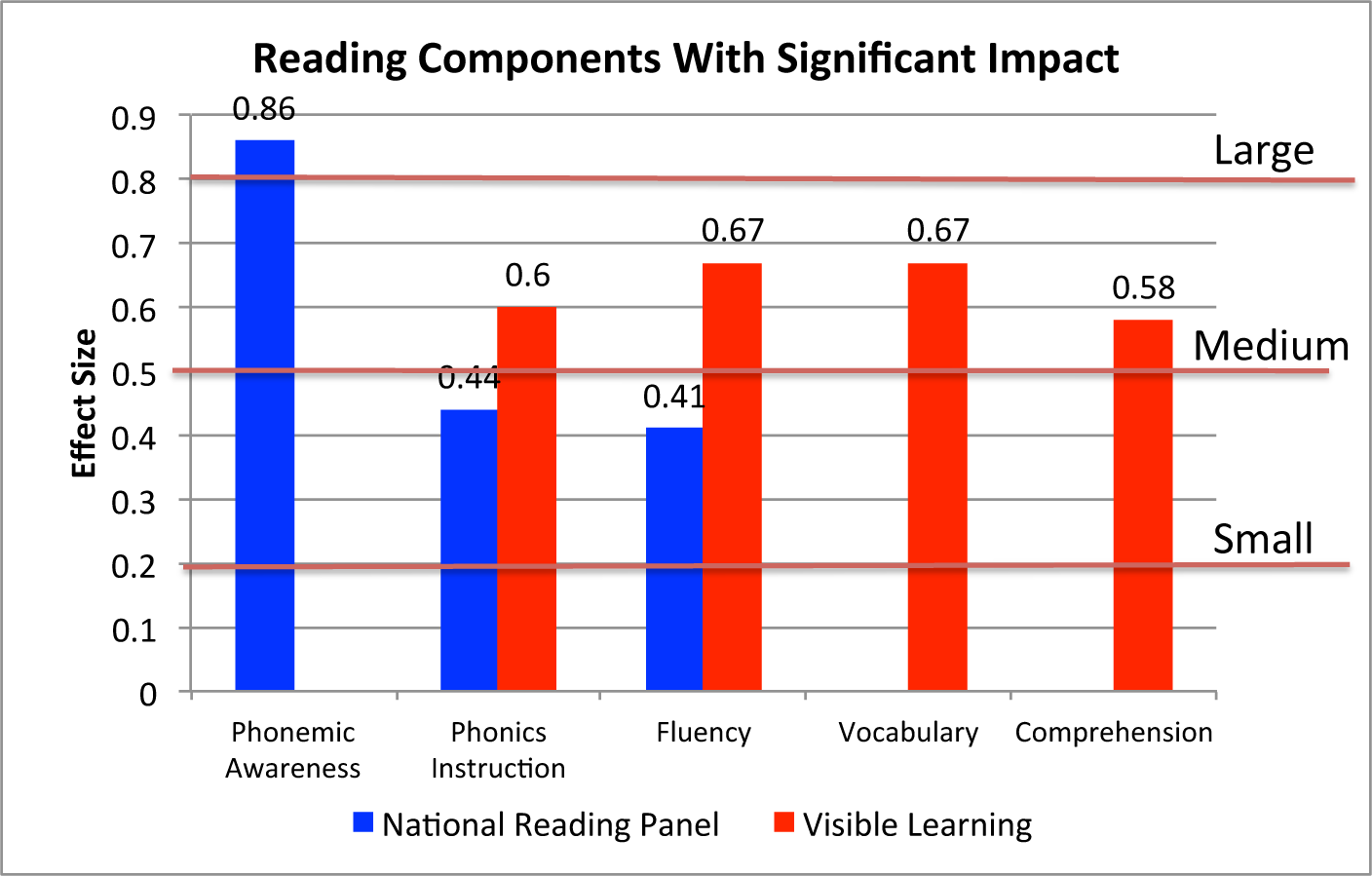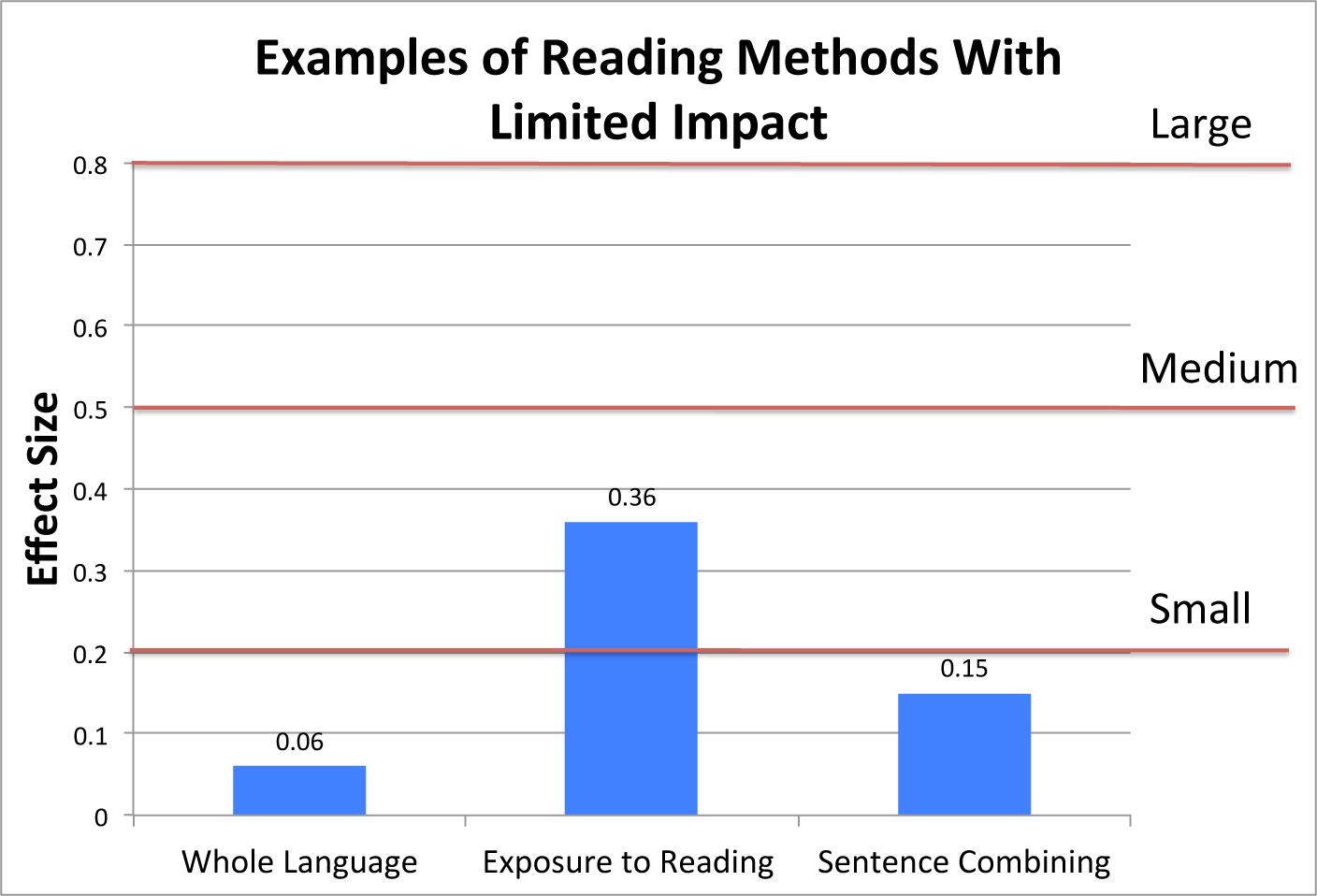What are the most effective ways for teachers to teach reading?
Why is this question important? For centuries reading has been recognized as the yardstick by which all education systems have been measured.
- Reading is critical for adults to navigate the modern world.
- Reading is fundamental for adults to acquire good-paying jobs in the modern society.
- Reading is the foundation for all subjects taught in school.
- Reading along with math are the two critical skills by which schools are evaluated.
- Research shows that children who fail to read fail to be successful in school.
- Reading, as measured by National Assessment of Educational Progress (NAEP) reading scores, has not shown improvement in over 30 years. Fourth and eighth graders have not achieved proficiency standards for over 20 years
- Approximately 20% of elementary school students have difficulty reading and are unable to read fluently.
- Approximately 35% of adults lack the literacy skills necessary to hold a good-paying job.
See further discussion below.


Source(s): Report of the National Reading Panel, 2000; and Visible Learning: A Synthesis of Over 800 Meta-Analyses Relating to Achievement, 2009
Result(s): The final report identified five essential components for an effective reading curriculum: phonemic awareness, phonic instruction, fluency, vocabulary, and comprehension. The report also examined current teacher preparation as well as the use of computer-based instruction to teach reading. The report provided an effect size for the first three reading categories: phonemic awareness (0.86), phonic instruction (0.44), and fluency (0.41). Unfortunately, the NRP was unable to establish an effect size for vocabulary and comprehension. The NPR has been criticized for the inclusion of so few studies in the final document. Despite this, the NRP results are consistent with the findings of the vast majority of research and meta-analyses available on the subject of teaching reading. The Wing Institute analysis includes additional effect sizes derived from other studies (Hattie, 2009) to complete the picture of what works in reading and to show the depth of the knowledge base supporting the NRP conclusions. Additionally, The Wing Institute has provided effect sizes obtained from Hattie, 2009 for three reading methods; whole language, exposure to reading, and sentence combining. All three are less effective in promoting the literacy goals outlined in No Child Left Behind/ESEA.
Implication(s): Reading is the most thoroughly researched topic in the field of education. The results are consistent and offer educators a convincing blueprint on how to effectively teach reading. Despite this, education reading scores for the past 30 years have remained disappointingly flat (see National Reading Trends chart). Teacher preparation programs have a poor track record in teaching reading (see Training Teachers to Teach Reading chart), and schools continue to embrace reading methods that are ineffective. The key to full literacy requires reform in both teacher preparation and schools through adoption of reading methods that incorporate all five core components of effective reading: phonemic awareness, phonic instruction, fluency, vocabulary, and comprehension.
Author(s): Donald N. Langenberg, Gloria Correro, Linnea Ehri, Gwenette Ferguson, Norma Garza, Michael L. Kamil, Cora Bagley Marrett, S. J. Samuels, Timothy Shanahan, Sally E. Shaywitz, Thomas Trabasso, Joanna Williams, Dale Willows, and Joanne Yatvin (Report of the National Reading Panel, 2000); and John Hattie (Visible Learning: A Synthesis of Over 800 Meta-Analyses Relating to Achievement, 2009)
Publisher(s): National Institute of Child Health and Human Development (Report of the National Reading Panel, 2000); and Routledge (Visible Learning: A Synthesis of Over 800 Meta-Analyses Relating to Achievement, 2009)
Study Description: Report of the National Reading Panel (Langenberg et al., 2000) – In 2000, the NRP completed a comprehensive review of the research on what works in teaching reading. The panel was formed as a response to a congressional request to examine the research base on reading and assess the effectiveness of approaches to teaching children to read. The team comprised 14 individuals, including leading scientists in reading research, representatives of colleges of education, reading teachers, educational administrators, and parents. The report consisted of a meta-analysis of the current research on reading.
Visible Learning: A Synthesis of Over 800 Meta-Analyses of Relating Achievement – The book is a synthesis of research that provided data on the effect sizes of educational interventions on student achievement. Based on a review of over 50,000 individual studies, the book does not include qualitative studies but instead relies on quantitative research and makes use of effect size to communicate the power of interventions identified in the meta-analyses.
Definition(s):
- Effect size: A standardized measure of the effect of an intervention (treatment) on an outcome. The effect size represents the change (measured in standard deviations) in an average outcome that can be expected. Because effect sizes are standardized, they can be compared across studies.
- Phonemic awareness: Hearing and understanding the sounds in words in a language. Vocal languages are made up of sequences of sounds. Instruction in phonemic awareness involves teaching children to focus on and manipulate phonemes in spoken syllables and words.
- Phonic instruction: A method of teaching reading that stresses the acquisition of letter-sound correspondences and their use in reading and spelling. Phonics instruction focuses on teaching students how to use letter-sound relationships to read or spell words. Phonemic awareness becomes phonics instruction when students are taught to blend or segment the sounds in words using letters.
- Fluency: Indicates that a student has mastered phonemic awareness and can now successfully read words. Fluent readers are able to read orally with speed, accuracy, and proper intonation. Students who are not fluent will not be successful at the skill of comprehension required for success in the vast majority of courses in elementary and secondary education.
- Vocabulary: Knowledge of words and word meanings.
- Comprehension: The ability to extract meaning and understanding from text.
- Whole language: A method of teaching reading that emphasizes acquisition through experience and the context in which reading is presented. Reading acquisition is more readily learned when presented in a natural context such as reading a story.
- Exposure to reading: The overall experience of being read to, discussing stories read, and interacting with students about reading.
- Sentence combining: A reading method that requires students to combine two or more sentences into a compound or complex sentence.
Citation:
National Institute of Child Health and Human Development. (2000). Report of the National Reading Panel. Teaching children to read: An evidence-based assessment of the scientific research literature on reading and its implications for reading instruction (NIH Publication No. 00-4769). Washington, DC: U.S. Government Printing Office.
Hattie, J.C (2009). Visible Learning: A Synthesis of Over 800 Meta-Analyses Relating to Achievement. NY:Routledge.
